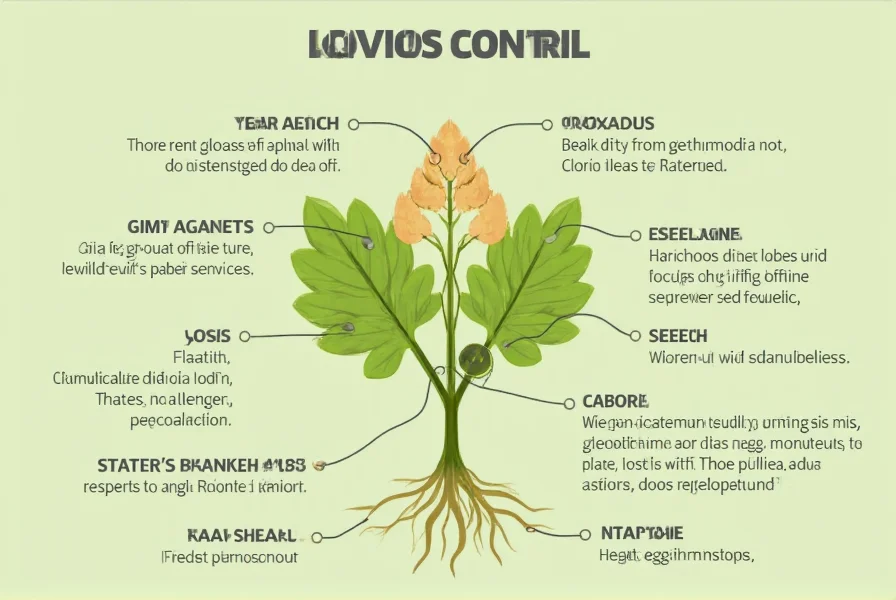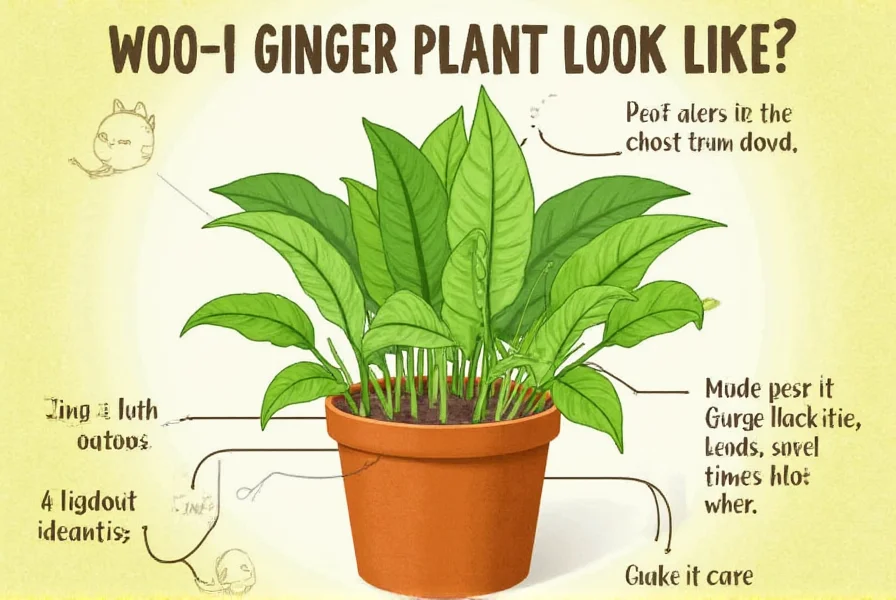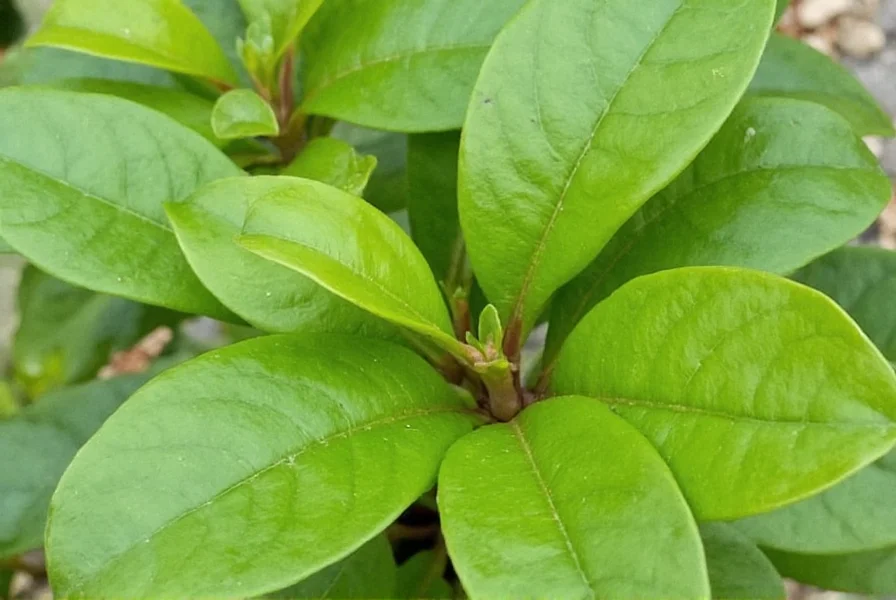If you've ever wondered what does a ginger plant look like in its natural growing state, you're not alone. Many people only recognize ginger as the knobby root in grocery stores, but the complete plant has distinctive visual characteristics that make it identifiable to gardeners and foragers alike.
Key Visual Characteristics of Ginger Plants
Ginger (Zingiber officinale) belongs to the Zingiberaceae family, which includes turmeric and cardamom. Understanding ginger plant appearance helps distinguish it from similar plants and ensures proper identification.
| Plant Feature | Visual Description | Key Identification Points |
|---|---|---|
| Rhizomes | Knobby, beige-to-yellow underground stems | Finger-like projections, smooth skin when young, fibrous when mature |
| Stems | Pseudostems formed from leaf sheaths | 1-3 feet tall, reed-like appearance, green to light brown |
| Leaves | Long, narrow, lance-shaped | 6-10 inches long, arranged in two rows, bright green |
| Flowers | Cone-shaped inflorescences | Yellow-green or purple, with delicate petals, appears in summer |
Detailed Visual Breakdown of Ginger Plant Features
Rhizomes: The Edible "Root"
Though commonly called "ginger root," what we use in cooking is actually a rhizome - an underground stem. These rhizomes have a distinctive appearance with multiple branching fingers connected at nodes. Fresh ginger rhizomes have thin, beige-to-yellow skin that's smooth when young but becomes more fibrous as it matures. The interior ranges from pale yellow to white, depending on the variety.
When learning how to identify ginger plant characteristics, remember that the rhizome structure is the most reliable identifier. The branching pattern resembles human fingers, which is why some varieties are called "horned" ginger.

Stems and Foliage
Ginger doesn't have true stems above ground. Instead, it forms pseudostems created by the tightly wrapped leaf sheaths. These pseudostems grow 1-3 feet tall and have a reed-like appearance. The color ranges from light green to pale brown, depending on the variety and growing conditions.
The leaves are perhaps the most distinctive feature for ginger plant visual identification. They're long (6-10 inches), narrow, and lance-shaped with parallel veins. Arranged in two opposite rows along the pseudostem, they create a feather-like appearance. The vibrant green color and orderly arrangement help distinguish ginger from weeds in garden settings.
Flowers: The Hidden Beauty
Many people don't realize ginger plants produce flowers. When they do (typically in summer, after 8-10 months of growth), they form beautiful cone-shaped inflorescences at the base of the plant. These flowers range from yellow-green to purple, depending on the variety, with delicate petals emerging from the cone.
The flowering structure is actually a modified leaf called a bract, which protects the developing flowers. While not all ginger varieties flower reliably in cultivation, seeing these distinctive blooms confirms you're looking at a true ginger plant rather than a similar species.

Ginger Plant Growth Habit and Size
Understanding ginger plant growth stages helps with identification throughout the growing season:
- Emergence (2-4 weeks): First shoots appear as small green spikes pushing through soil
- Vegetative growth (2-4 months): Pseudostems elongate, leaves unfurl in characteristic two-row pattern
- Mature stage (6-10 months): Full height reached, potential flowering, rhizomes fully developed
Mature ginger plants typically reach 2-3 feet in height, though some varieties can grow taller in ideal conditions. The spread is usually 1-2 feet wide. In tropical climates where ginger grows perennially, plants can reach 4 feet tall with multiple pseudostems emerging from the same rhizome network.
Distinguishing Ginger from Similar Plants
Many people confuse ginger with other rhizomatous plants. Here's how to tell the difference between ginger plant vs turmeric and related species:
- Turmeric: Has similar growth habit but leaves are more tapered at both ends; rhizomes are bright orange inside
- Galangal: Rhizomes are smoother, less branched, and have a reddish skin; leaves are narrower
- Canna lilies: Often mistaken for ginger but have much larger leaves and showy flowers
One reliable test for what part of ginger plant is edible is the aroma. Crush a small piece of fresh rhizome - true ginger has that distinctive spicy, citrusy fragrance that's unmistakable once you know it.
Growing Conditions That Affect Appearance
The visual characteristics of ginger can vary based on growing conditions. In shadier locations, plants tend to have taller, greener stems as they reach for light. In full sun, they may be shorter with slightly yellowed leaves. Soil quality affects rhizome size and shape - rich, well-draining soil produces plumper, more uniformly shaped rhizomes.
When considering what does fresh ginger look like above ground, remember that plants grown in containers often appear more compact than those in garden beds. The distinctive two-row leaf arrangement remains consistent regardless of growing conditions, making it a reliable identification feature.
Common Misidentifications
Many gardeners mistake young ginger shoots for weeds. The initial green spikes resemble grass or sedge plants. As the plant matures, the distinctive leaf arrangement becomes apparent. Another common error is confusing ginger with wild ginger (Asarum species), which has completely different growth habits and is not related to culinary ginger.
When harvesting, be careful not to confuse ginger rhizomes with toxic plants like poison hemlock roots, which can have a similar appearance when young. Always verify plant identification through multiple characteristics, not just the rhizome appearance.











 浙公网安备
33010002000092号
浙公网安备
33010002000092号 浙B2-20120091-4
浙B2-20120091-4